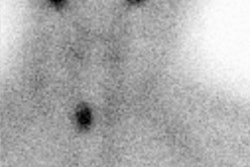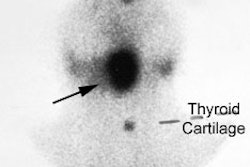Radiographics 2002 May-Jun;22(3):477-90
Pharmacologic interventions in nuclear radiology: indications, imaging
protocols, and clinical results.
Saremi F, Jadvar H, Siegel ME.
Nuclear radiology is valuable in assessing pathophysiology of a variety of organ
systems. Pharmacologic interventions are often employed in radionuclide imaging
to monitor the physiologic changes, which in turn facilitate the diagnosis.
Metoclopramide, erythromycin, and cisapride have been used for gastric emptying
studies. To overcome false-negative results, cimetidine, pentagastrin, and
glucagon have been used in imaging of Meckel diverticula. Pharmacologic
intervention with either cholecystokinin-8 or morphine is used primarily for the
assessment of diseases of the gallbladder, common bile duct, and sphincter of
Oddi. Pharmacologic interventions performed during renography include diuretic
administration, angiotensin-converting enzyme inhibition, and aspirin renography.
Recombinant thyrotropin can be used in patients with previously treated thyroid
carcinoma who require lifelong follow-up for recurrent disease. Cardiac
pharmacologic stress agents fall into two categories: coronary vasodilating
agents, such as dipyridamole and adenosine, and cardiac positive inotropic
agents, such as dobutamine and arbutamine. Measurement of hemodynamic responses
to pharmacologic flow augmentation with carbon dioxide or acetazolamide is
valuable in cerebrovascular perfusion studies. Copyright RSNA, 2002




